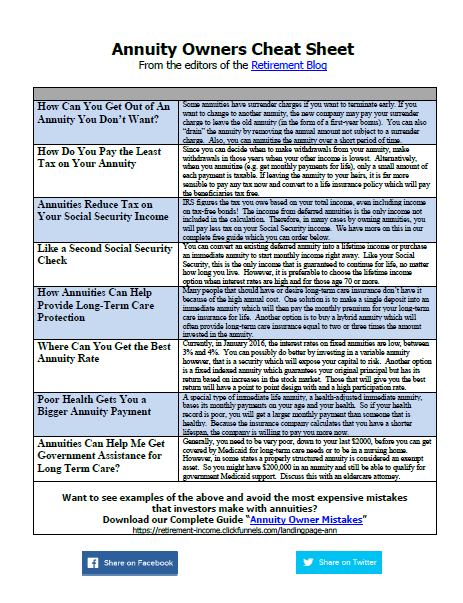A fixed life annuity ensures you a guaranteed annuity interest during your retirement years. Needless to say, the amount of annuity income depends on how much an individual contributed to the annuity contract -- and how much the contract has grown as well as your age when you started your annutization. Income options include a month-to-month payout based only in your life alone or under a shared and survivor option - or simply the fixed (certain) term. But how much annuity interest will you have after tax?
We are going to deal with a nonqualified annuity here. It's tax-benefit is the tax-deferred growth of your investment within the contract until you take money out. At that time, if you withdraw just annuity interest, it is taxed like any other interest. But if you annuitize, i.e. get payments comprised of both principal and interest, only the annuity interest portion is taxed. Note that non-qualified annuities however are funded with after-tax contributions so of course, the distribution of that principal to you later is not taxed..
Since the contributions you make for the non-qualified annuity are already taxed, they will not be taxed after as you withdraw your resources. They constitute the 'basis' of your respective investment in the annuity contract. You should uncover what this is (from your annuity company), since you need it to figure your annuity interest in the course of distributions as from each payment, part is interest and part if non-taxable principal.
When you have chosen your monthly payout option (for a set period of years, single life, joint life, etc), you may want to know exactly how the annuity interest is taxed. We explain.
When the period of time for payouts are fixed (e.g 10 years), you know that you will receive exactly 120 payments. You simply divide the entire number of months into your 'basis'; and now you know how much of each payment is not taxed. The rest is annuity interest that must be reported on your tax return.
In the case you have opted for lifetime payments - the number of months will be your life expectancy at the start of your annuitization periods. Assuming an age of 65 means a remaining life expectancy of 17 years so you divide 204 into your origianl investment and that is the untaxed portion of each monthly payment. The remainder of each monthly payment is annuity interest, taxed at your ordinary income rate.
What if a person outlives the 17 years in the above example?
If you outlive your life expectancy (likely a happy event) used in determining the taxable portion of each payment, this means your principal has been fully distributed to you. Unfortunately, all future regular monthly payouts are 100% subject to annuity interest at the ordinary income tax rate.
For those of you who began your annuity payouts before 1988, you can continue to maintain the same small percentage of payout as non-taxable while you did before you fully recoverable your basis. That is another annuity interest break for you!

Leave a Reply